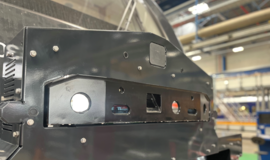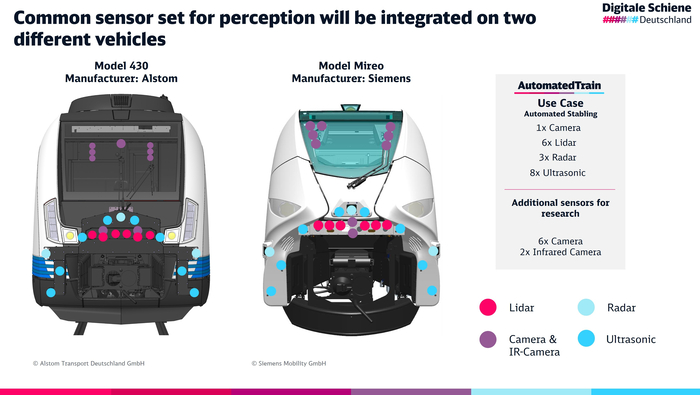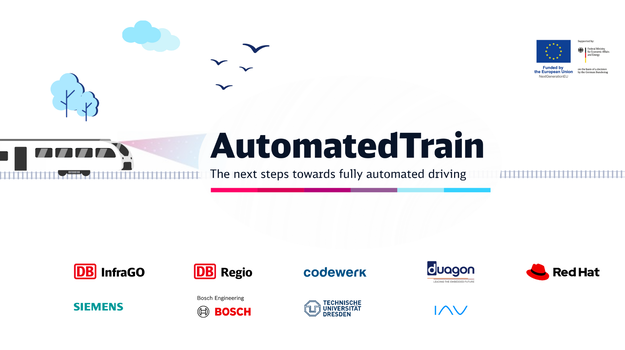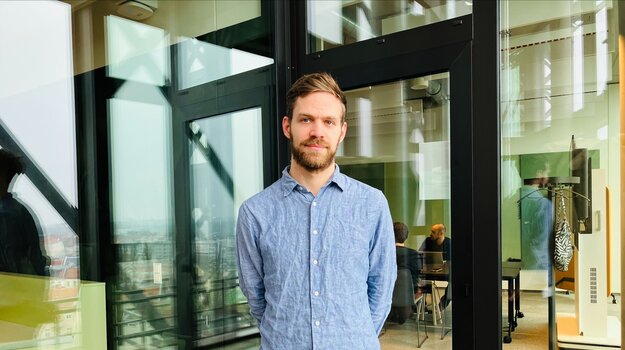
State-of-the-art environment sensor technology for for fully automated, driverless dispatching and stabling in the ‘AutomatedTrain’ project
In the "AutomatedTrain" project, DB InfraGO as part of Digitalen Schiene Deutschland is working with partners from industry and science to develop solutions for fully automated, driverless dispatching and stabling as well as the automated preparation and shutdown of trains. The latest generation of sensors for environment perception plays a decisive role here. A current technical article in the magazine ‘Der Eisenbahningenieur’ provides a comprehensive overview of the latest developments.
The central element of the project is an innovative sensor system for precise environment perception and obstacle detection. This is installed as an example on two vehicles: a Siemens Mireo regional train and an Alstom 430 series S-Bahn Stuttgart train (see illustration). The sensors have to overcome a variety of railway-specific challenges such as different weather conditions and strong temperature fluctuations.

Various sensor technologies such as ultrasonic sensors, Lidar sensors, long-range radar and colour and infrared cameras (LWIR), which complement each other, are used for the sensor set derived in the project. The Lidar sensors provide a high spatial resolution when detecting obstacles, while the radar sensors are particularly resistant to environmental influences such as rain or snowfall. Thanks to a smart combination of different technologies, safety requirements (Safety Integrity Level (SIL) 1) for obstacle detection can also be conceptually fulfilled for the first time within AutomatedTrain - a first in Europe. A particular challenge is the integration of these technologies into existing vehicles, taking into account electromagnetic compatibility (EMC), fire protection and restrictions in terms of weight, energy requirements and space. Findings from previous innovation projects such as the Sensors4Rail project are therefore being systematically incorporated into the current development, so that significant improvements in system performance are already expected as part of AutomatedTrain.
An important part of the project is the development of a diverse and high-quality data basis, which will not only be used to validate obstacle detection, but will also serve as the basis for future AI functionalities. The Siemens Mobility test and validation centre in Wegberg-Wildenrath and reference routes in Stuttgart serve as test environments for the new sensor technologies. The project is being funded by the German Federal Ministry for Economic Affairs and Energy (BMWE). The results will be presented to the public for the first time at InnoTrans 2026. Digitale Schiene Deutschland is thus sending important impulses into the sector and creating the basis for the future development of production-ready products for the automation of railway operations by the industry.
You can find the article in ‘Der Eisenbahningenieur’ here (German only).

